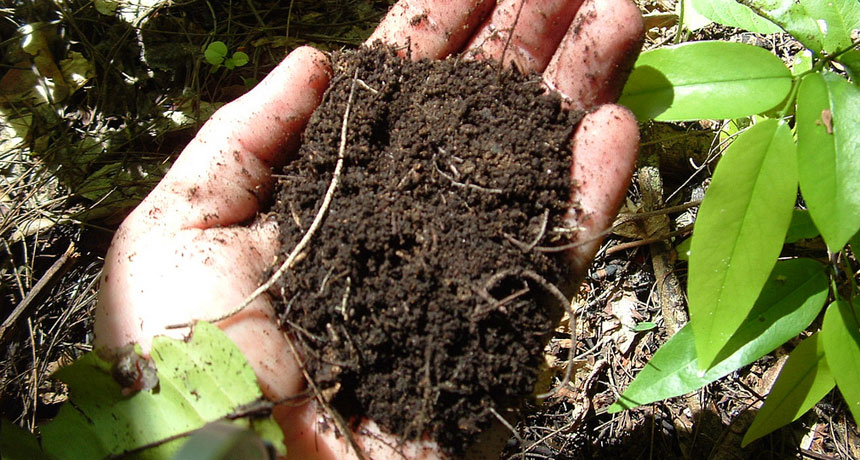One of the most important factors affecting soil processes are living organisms. Increasingly, biological activity is being recognised as an important factor in regulating soil processes, such as storage of carbon, and thus soil profile development.
The role that living organisms play in soil development cannot be overstressed.
- The accumulation and decay of organic matter,
- the development of soil structure,
- the mixing of soil material (bioturbation),
- nutrient cycling,
- the physical breakup of bedrock by roots
- the bacterial destruction of clay minerals
are all the result of organisms living in the soil, and are critical soil-forming processes.
In a broad sense, the activity of organisms in the soil is closely linked to climate. Biological activity is also present in hot, dry desert regions, in low temperatures or in very wet conditions, even though bacterial decomposition is reduced and organic matter accumulates. In the warm and wet conditions of the tropics, both bacterial and fungal activity are intense. In temperate zones, burrowing mammals, beetles and earthworms can have a strong influence on soil processes by facilitating the transfer of water and air along burrows and channels. In the tropics, termites and ants play a major role in nutrient recycling and the redistribution of soil material – the movement of particles of subsoil to the surface by termites is one of the main factors responsible for the homogenised profiles that are typical of some tropical soils.
Soil formation driven by human activity.
Some people argue that all cultivated soils have been affected or altered by human activity through the mixing of topsoil and subsoil by ploughing, changing the chemical balance through liming, or depleting nutrients through intensive farming. However, there are numerous examples throughout the world where the entire soil body was either totally formed, or at least profoundly modified, through human activities, such as the addition of organic materials or household wastes, irrigation or cultivation. Collectively known as Anthrosols, examples include:
- very deep tillage that is below the depth of normal
- ploughing – often through the use of terraces
- intensive fertilisation with organic fertilisers such as manure,
- kitchen refuse, compost, human excrement
- continuous application of earth (e.g. sods, beach sand and shells) or sediment through irrigation
- wet cultivation that involves puddling the surface of the soil or human-induced wetness (e.g. paddy fields for rice cultivation)
Another major human management factor is drainage which affects the frequency and duration of periods when the soil is saturated by water. In waterlogged soils, drainage can allow crops to be grown by allowing oxygen to move within the soil. The drainage of peatlands for cultivation can eventually result in total soil loss from shrinkage and wind erosion if the peat is allowed to dry out completely.


